Rock Shelters of Bhimbetka
By Ketki Gadre
What are the Rock Shelters of Bhimbetka?
The rock shelters of Bhimbetka are located about 45 km (28 mi) from Bhopal, Madhya Pradesh. Situated amidst the lush green dense forests of Vindhyachal ranges, rocky terrain and craggy cliffs, the rock shelters of Bhimbetka present a breathtaking view extending to Obaidullaganj, a small town near Bhimbetka.
Within these dense forests are five groups of natural rock shelters showcasing paintings that seem to span from the Mesolithic period to the historical period. The cultural traditions of the people living in the nearby villages from this site closely mirror those depicted in the rock paintings.
Disclosure: This article contains affiliate links. Making a purchase through an affiliate link will mean a small commission for this website. This will not affect your price. Privacy policy.
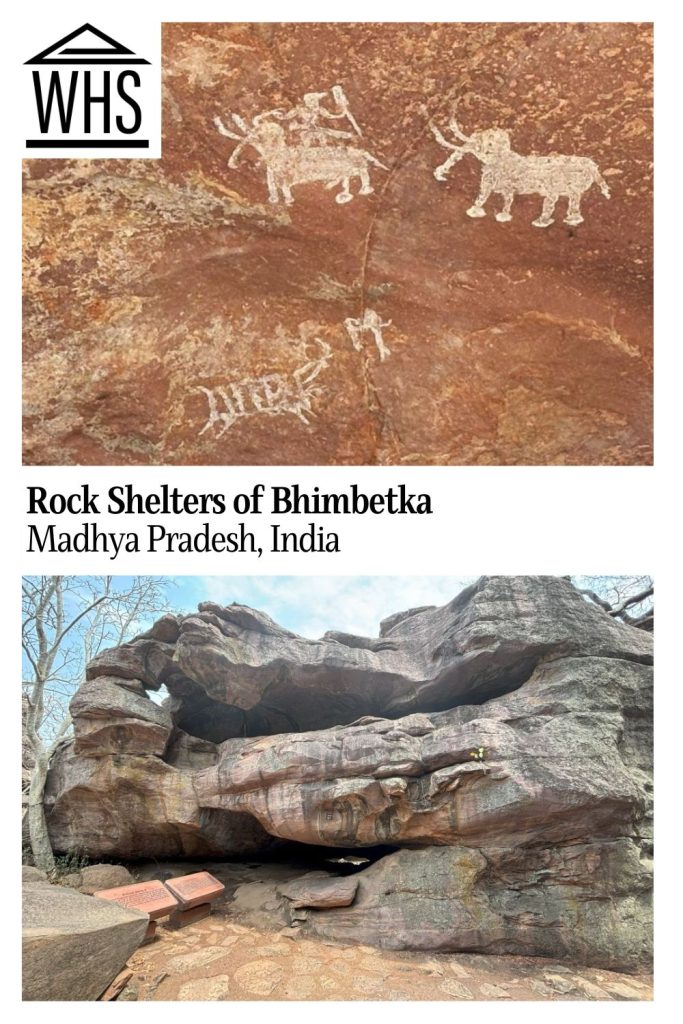
Why are the Rock Shelters of Bhimbetka a UNESCO World Heritage site?
Announced as a World Heritage site in July 2003, it got the coveted UNESCO status because it “reflects a long interaction between people and the landscape, as demonstrated in the quantity and quality of its rock art.” A hunter-gatherer society created this art, which links it to remnants of the same tradition in the local indigenous villages.
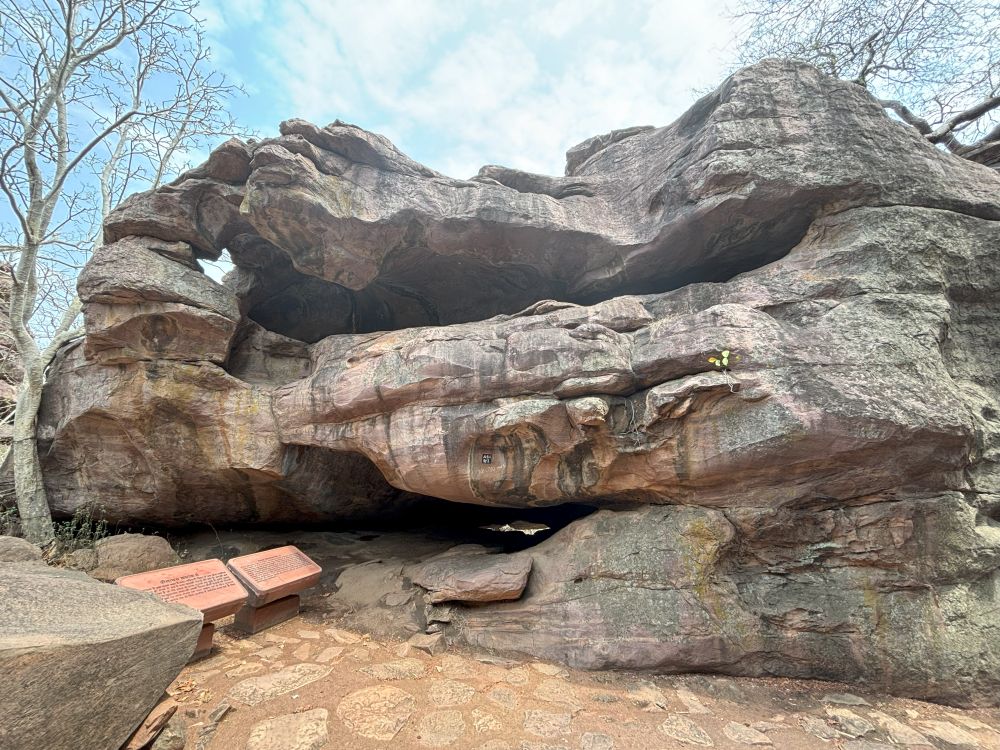
What can you expect on a visit to the Bhimbetka rock shelters?
On a cloudy morning, when I reached the entrance to the rock shelters, it looked pretty simple and normal. However, given their UNESCO status and how ancient they are, I decided to hire a guide.
My guide told me that the history of humankind when they were hunters and gatherers began here as the paintings depict that era. However, the site was discovered only in 1957. The paintings have been conserved from weathering due to the rock shapes preventing the water from going inside. The rocks have also adapted to the various weather changes and absorbed the colour of the paintings that have made them survive centuries without any major changes.
Bhimbetka features over 750 rock shelters, with more than a hundred displaying paintings of animals and human figures in shades of green, red, white, brown, and black. Most of these figures are still in pristine condition which has made the archaeologists study in detail about the historical timelines of when they were drawn.
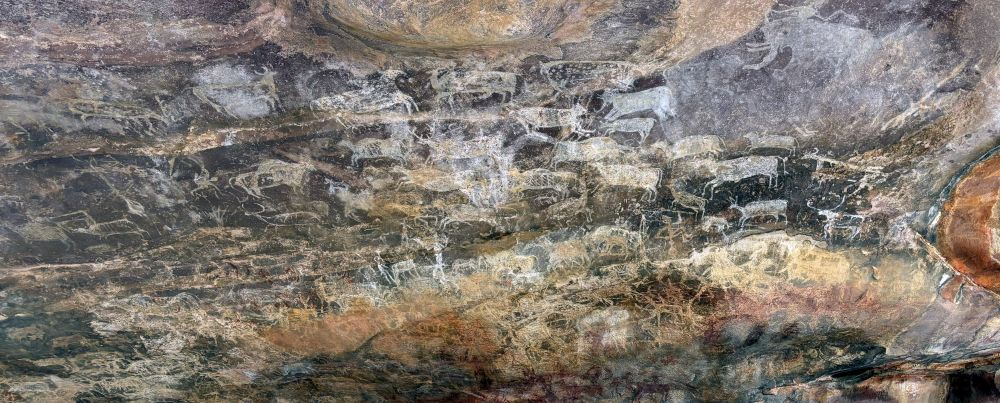
To create these artworks, brushes were likely made from twigs that were chewed to soften them and remove the fibres. Fingers, bird feathers, and animal hair may have also been used as tools. The pigments for the colours were possibly derived from vegetables or local sedimentary rocks.
Visitors can see Bhimbetka paintings that are classified into nine phases across three broad cultural periods: Phases I–V during the Paleolithic and Mesolithic period, Phase VI during the Chalcolithic period, and Phases VII-IX during the Historic period. Some scholars propose that the earliest paintings could date back to around 40,000 B.C.E. or even earlier. You cannot tell from the paintings – it helps to have a guide with you.
Early Bhimbetka paintings predominantly depict wild animals such as gaur (a type of wild ox), deer like the chital, monkeys, wild boars, stags, and elephants, as well as hunting scenes where humans are shown with bows, arrows, and headgear. There are also scenes depicting rituals, women digging out rats from holes, and men and women gathering fruits and honey.
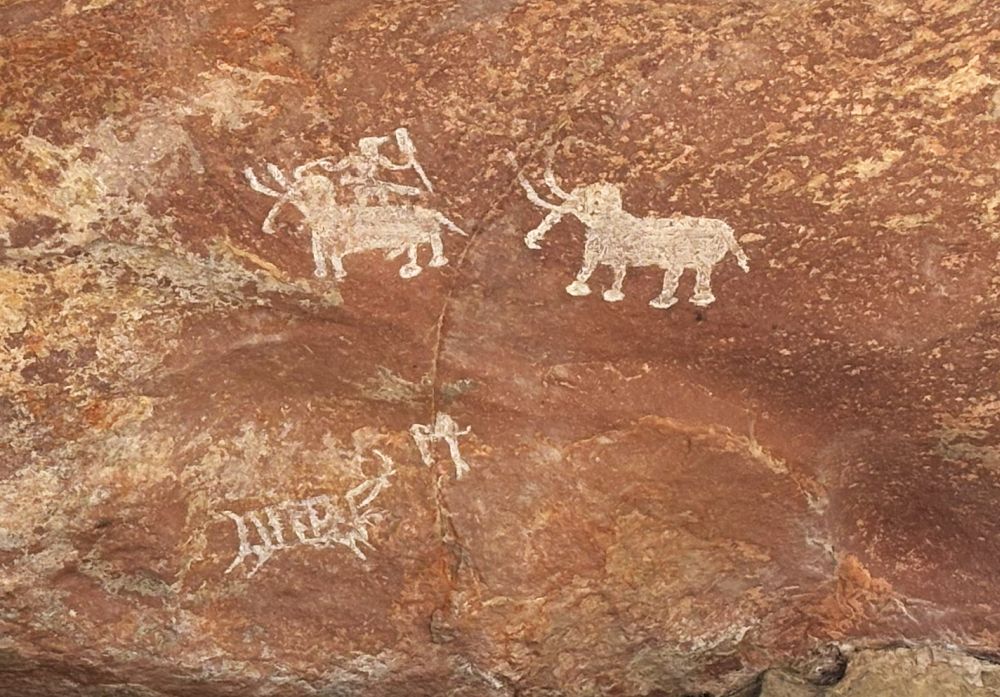
In contrast, later paintings from the Historic period onwards show processions; warriors with swords, shields, and daggers; and collective rituals. These later paintings often lack animal figures. When animals do appear, they are drawn disproportionately. Some of these later motifs suggest the influence of Hinduism or Buddhism. Clear depictions of deities like Ganesha and Shiva, representations of the Mother Goddess, and symbols such as the Trishul and Swastika can also be found.
It is really interesting to go through the canvas on stone across so many different historical periods.
Is Bhimbetka worth visiting?
If you love archaeology or heritage then Bhimbetka is a wonderful place to spend a couple of hours. If you are travelling to Bhopal and have time to get away for half a day then it is worth spending some time here. It is especially interesting to know the historical periods and the origins of Warli art through paintings.
For some visitors, it may be boring if you do not have a guide who explains the place in detail. The area is huge and it would be difficult to spot paintings on certain rocks. After some time, it may become repetitive.
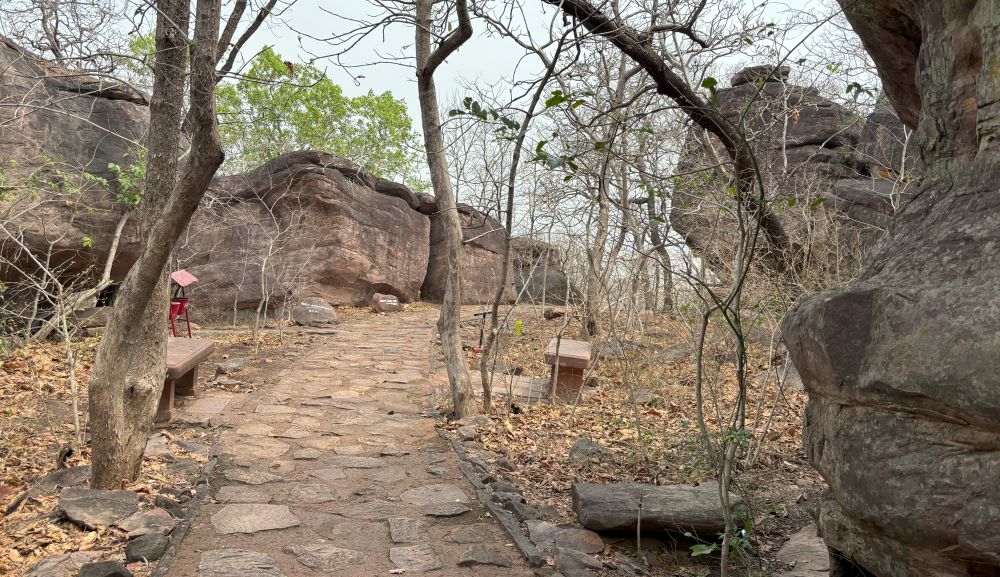
Tips for visiting Rock Shelters of Bhimbetka
The rock shelters are on hilly terrain which involves quite a bit of walking and climbing stairs to see the whole thing. It is not wheelchair accessible, and there’s no way to view the rock shelters without climbing some stairs. I recommend you to wear comfortable shoes if you plan to see the whole area.
Although there are information boards, I highly recommend you hire a guide to know about the place in detail.
Carry a bottle of water as the walking and heat may tire you out. Wear a cap and sunscreen to block out harsh sun if going in the afternoon or summer months.
Wear an insect repellent as certain dark and interior rocks may have mosquitoes.
Make sure to take a look at some of the other UNESCO sites in India as you plan your visit. The Buddhist Monuments at Sanchi are fairly nearby, and some of the Hill Forts of Rajasthan as well.
Where are these rock shelters?
Bhimbetka is located 45 km (28 mi) from Bhopal, the capital of the state of Madhya Pradesh. It takes about 45-60 minutes by car to reach here. There are enough parking spaces and there is a small admission fee.
Book your Bhopal accommodations here.
There is no public transportation to reach here. Visitors will have to hire a car and driver. Alternatively, take a tour from Bhopal that includes Bhojpur Temple as well as the Bhimbetka rock shelters.
For more information about the Bhimbetka rock shelters, virtual tours, the site’s opening hours and admission fees, see Madhya Pradesh Tourism’s official website.
Have you been to the Bhimbetka rock shelters? If so, do you have any additional information or advice about this UNESCO World Heritage site? Please add your comments below!

